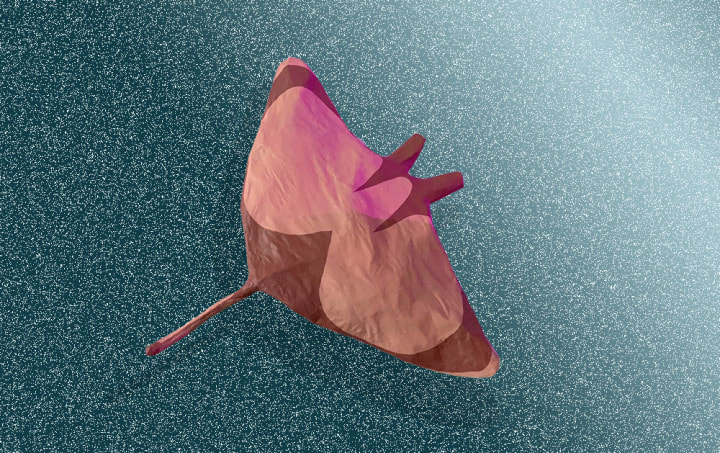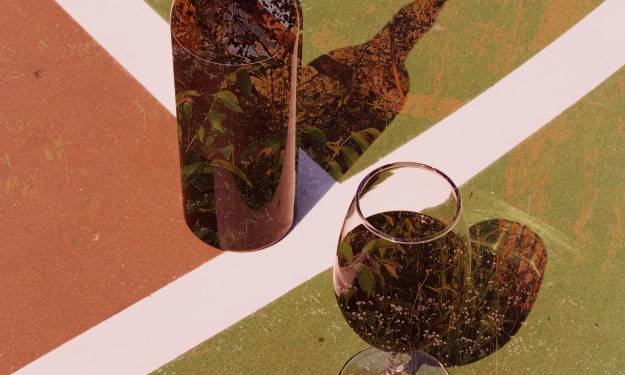More than a crafternoon
Crafting as a life practice

I have been a crafter since childhood, but it wasn’t until recently that I recognized the role that crafting plays in my happiness and well-being. Scissors -- from my first pair, blunt-pointed and dull for my tiny hands, to pointed and sharp, for today’s projects – continue to play an important role in my crafting and my life.
Growing up, my family knew if the scissors went missing from the kitchen supply drawer, they could be found in my bedroom. I often snuck them from their home for various crafting projects involving paper, glue, and maybe yarn and crayons. All projects required a good pair of scissors to complete. I relished every opportunity to craft a gift or card for a friend or family member. Not only was it fun and made my gift unique and personal, now I realize even then I found the process of creating meditative and cathartic.
Later, my craft focus shifted to paper, making collages, binding books, and piecing together posters and decorations. In my college years, I created a final project for a literature that was a paper quilt made up of nine squares. Each square featured a collage with elements representing narratives and lessons from the class. I finished it with a piece of lace running around the edge. And yes, I got an A.
My collection of craft supplies grew to include yarn, polymer clay, beads, foam boards and pieces, balloons, fabric, and fabric dye. My paper supply grew, too: thicker paper for printing on, color construction paper for posters and cards, finer paper for letters, and stacks of torn out pages and cut out phrases from various old books. When paper is your medium, you must have a good pair of scissors, or three or four for when one pair inevitably goes missing. The bin of supplies followed me from apartment to apartment and carried the thread of crafting through various stages of my life. Crafting became a way for me to chart my journey; instead of writing in a journal, I collected craft supplies and made art.
When I moved to Los Angeles my crafting supplies accompanied me while I left much else behind. I needed ways to connect with people in my new city, and I sought out arts and craft events, hoping to make friends. And I did: crafting become a part of my social life and I began to recognize how important crafting was to me as a way to express myself and connect with others.
I thought of papier-mâché when my collection of various papers became unruly. My childhood memories were of making odd shapes and masks of classmates’ faces. But classroom projects were lacking in the tedium that comes with the preparation phase: cutting hundreds of strips of paper, mixing a liquid with the right combination of water, flour, and glue, and taping down plastic sheeting. Now I take pleasure in the complete process.
More than the end result, there is so much joy in the process: imagining the idea, planning and timing, and visiting craft and hardware stores to search for the right materials. For my first papier-mâché project, I knew I wanted to go big and build something larger than my childhood projects. Part of the fun of papier-mâché is that the underlying structure becomes entirely consumed by the many layers of paper, so you can use anything handy to create the shape. I collected odds and ends leftover from other projects and from the recycling bin including cardboard, chicken wire, and foil, and a small collection of toilet paper rolls.
For that project, I ended up deciding to create a manta ray, with chicken wire wings, a cardboard body, and molded foil and cardboard for a tail and fins. Once I had the shape, I started dipping the tediously cut paper strips in the goopy liquid and laying them one by one over the structure. I experimented with ways the paper strips stuck to each other versus the wire or foil and found ways to ensure full coverage for the first layer.
A finished papier-mâché project can show as much or as little of that process as the creator wants. It can display the edges of paper strips, leave a wire poking out, or it can be polished and smoothed until the underlying materials are impossible to identify. Depending on what you decide, you can allow a viewer to see into the process of creation, or to hide it, highlighting the finished piece.
And a big part of a papier-mâché project is waiting: waiting for each layer of paper to dry before adding the next and finally waiting for all the layers to dry so they can be painted and finished. I painted my finished manta ray a light salmon, with darker salmon highlights, then layered polyurethane over the top to protect and solidify the creature. I hung the manta ray on the wall, to swim among the sunlight coming in through the kitchen windows.

That first papier-mâché project was a step towards a longer-term focus on papier-mâché as a craft. I have since experimented with adding layers of wood filler and sanding it to create a smooth finish, adding shapes in polymer clay, and finishing with elaborate painted patterns. I consistently seek out new tools and materials and ways to expand my knowledge and skillset. Crafting as a practice has brought new friends, mindfulness, stress-relief, and joy to my life, and papier-mâché has taught me patience and appreciation for the process. With scissors in hand, I don’t ever intend to stop cutting strips of paper and seeing where they take me.






Comments
There are no comments for this story
Be the first to respond and start the conversation.